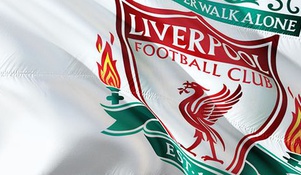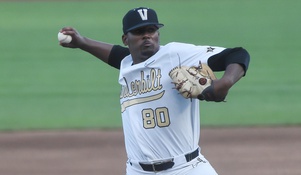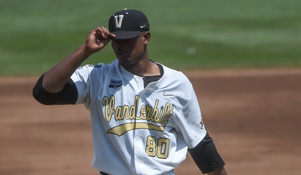The Long Gone Summer airs tomorrow night, my thoughts on one of baseballs greatest* seasons
The 30 for 30 Long Gone Summer will be airing Sunday night. Frankly, I'm more excited for this 30 for 30 than I was about the ten-part series on Michael Jordan The Last Dance. This might come as a slight bias toward the game of baseball but even if you aren't a fan of the game, I strongly recommend watching the documentary about the home run chase between Sammy Sosa and Mark McGwire.
The 1998 season can be remembered as one of the greatest seasons in baseball history. David Wells threw a perfect game and also threw five shutouts throughout the season. Kerry Wood threw 20 strikeouts in a game that might be considered the greatest pitching performance of all time (no runs, no walks and only one hit by the Astros that day). Roger Clemens had 271 strikeouts and 20 wins on his way to becoming the Cy Young award winner (Pedro Martinez had 251 on the season as well). The New York Yankees assembled one of the greatest teams the game had seen with 114 regular season wins on their way to winning another World Series as part of the late 1990's dynasty. The main story of the season however was the long ball, one couldn't go one night without #sportscenter showing someone hit a 400 or even 500 foot bomb as baseball was returning to it's glorious reputation of being the national pastime of our country. Sammy Sosa and Mark McGwire highlighted the most exciting home run season where Sosa hit 66 and McGwire hit 70 homers and 11 other batters cleared the 40 home run mark. 1998 was clearly the season to party.
But like any party, someone had to turn on the light switch and tell everyone to get out.
We found out the truth about why everyone was hitting homers every night. We found out why Sammy Sosa and Mark McGwire were able to give us the most exciting home run chase. The sad truth was steroids were an influence throughout the league and every team had players that were taking the performance enhancing drugs. The Long Gone Summer is forever tainted, an asterisk if you will and we look back at the season with a slight miss for the glory years of baseball but with the shame knowing the measures it took to achieve the excitement.
This goes for the entire era, it was an era of saying that it wasn't enough. Mark McGwire in his 1987 rookie season hit 49 home runs on his way to American League rookie of the year and was on pace to have 450 career homers, a Hall of Fame caliber career. He said to himself that it wasn't enough, McGwire needed to hit 70 or at least 50 per season and hit them deep. Barry Bonds was also part of this era, he was a 30/30 player (30 home runs, 30 stolen bases) every year which also is good enough to make the Hall of Fame. Bonds also thought it wasn't enough, he needed to hit 73 dingers and hit them farther than anyone else did on his way to 762 career home runs. The P.E.D.'s showed, one can look at a photo of these players in their rookie seasons and compare them to their seasons in the late 1990's and can tell they were juicing.
22 years later and baseball has a new crisis. In the midst of a pandemic where it appears other leagues are starting to lay out plans to return baseball is still at a standstill. The players and the owners can't agree to terms on the contract and the length of the season. Moreover, the players want to be paid and the owners want to keep a significant amount of the revenue to themselves but this has been escalating for years now.
The M.L.B. has seen profits skyrocket over the past few years and owners have seen large increases in revenue. The players haven't seen the same fortune. For starters, qualifying offers in 2016 were $17.2 million, in 2019 how much were they? $17.9 million, not such an increase in value. Compare the .7 million increase to the franchise tag in the NFL or the average value on the NBA contracts and we can see that M.L.B. players aren't receiving great deals. This is just the qualifying offers aspect, there are many other ways that the M.L.B. players are seeing their contracts fall short in comparison to the other major leagues. While players like Bryce Harper, Gerrit Cole and Mike Trout has seen massive contracts or extensions that give them $30 or $40 million a year most players are seeing difficulty on the free agent market. Many free agents aren't being signed the way they were a mere ten years ago and the players that are seeing deals are seeing short term ones that average 10-20 million a year, not the long term security that baseball was known to provide in their previous contracts.
The same problem that affected the sport we loved in 1998 is the same problem now. The players and owners seeing the state of the league and saying that it isn't enough. In 1998, it was the long ball, in 2020 its the money. Owners are billionaires and see a surplus of money from every season but clearly that isn't enough, they need to make sure they can get most of the profits from even a shortened season. The players can also be blamed for this, despite their salaries not increasing the way other leagues are seeing theirs increase, the qualifying offer is still more than the max contract in the N.H.L. and most people are envious of the Major Leaguers that can make $17.9 million a year. A shortened season would still give the players enough money that would make playing the season worthwhile and enough recognition to be able to come back the next year and demand greater salaries.
Baseball could have been the first sport back, they could have gave us hope for a return to normalcy in such dire times. They couldn't and they didn't, now we have to look for other leagues to give us hope. The irony is that the Long Gone Summer came four years after a strike and brought the excitement back to a game that many had lost interest in. After a few years that saw the Cubs break their 108 year World Series drought and the Nationals win their first Championship in franchise history, the M.L.B is on the verge of having their fans lose interest once again as the league appears to heading into another strike.






